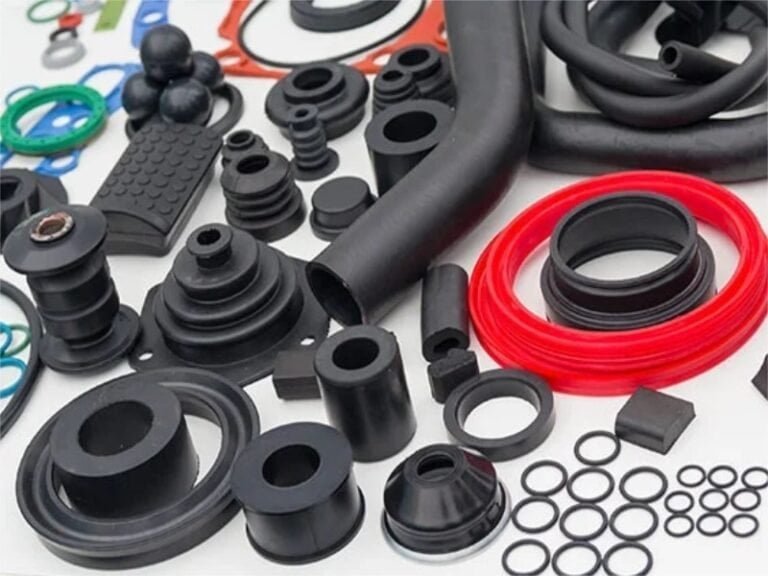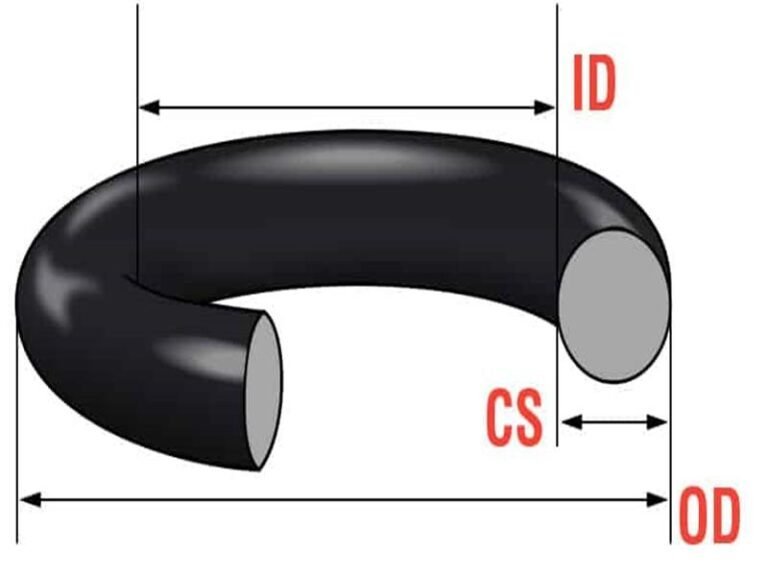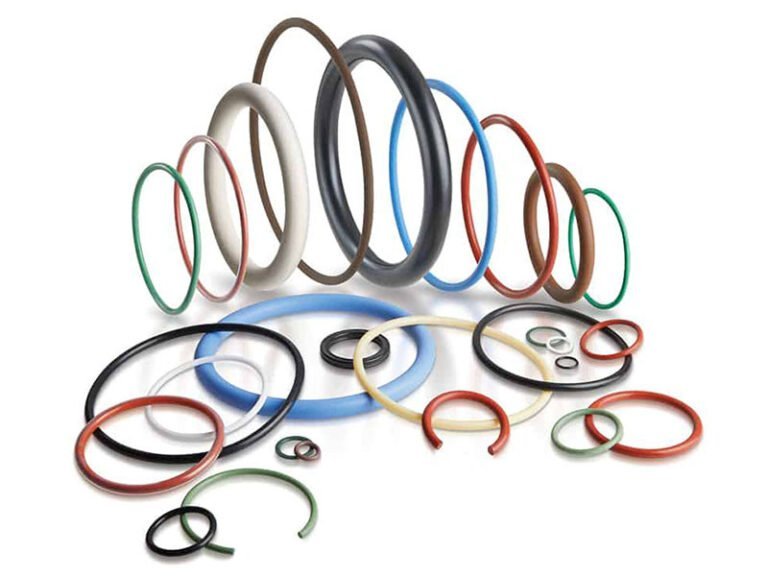The Rubber bushing materials selection impacts the rubber bushing’s ability to withstand environmental conditions, mechanical stress, and chemical exposure. Selecting the right rubber bushing material is crucial for the performance and longevity of the application. In this post, we will explore the various rubber bushing materials and the factors to consider when choosing the rubber bushing material.
What is Rubber Bushing?
Rubber bushings, also known as rubber mounts or vibration isolators, are critical components used in various mechanical and structural applications. These small yet essential parts are typically inserted between two metal parts to reduce vibration, absorb shocks, and limit noise. Made from various rubber materials, these bushings provide flexibility and resilience, ensuring smoother and quieter operation of machinery and vehicles.
Factors to Consider in Rubber Bushing Materials Selection
Selecting the right rubber bushing material involves evaluating several key factors to ensure optimal performance for the intended application. These factors include mechanical properties, environmental resistance, and application-specific requirements.
Mechanical Properties
- Tensile Strength: Tensile strength measures the material’s ability to withstand stretching forces without breaking. High tensile strength is crucial for applications where the bushing will experience significant stretching or pulling forces.
- Elongation: Elongation refers to the extent to which the material can be stretched before breaking. A high elongation percentage indicates good flexibility, which is important for applications that require the bushing to deform and return to its original shape.
- Hardness (Shore A): Hardness, measured on the Shore A scale, indicates the material’s resistance to indentation. A higher Shore A rating means a harder material, which is essential for load-bearing applications, while a lower rating indicates a softer, more flexible material.
- Compression Set: Compression set measures the material’s ability to return to its original thickness after being compressed. Low compression set is desirable for applications where the bushing must maintain its shape and performance under continuous compressive forces.
Environmental Resistance
- Temperature Range: The operating temperature range of the rubber material is critical. Some materials maintain their properties across a wide temperature range, making them suitable for extreme conditions, while others may become brittle or degrade at high or low temperatures.
- Weathering and Ozone Resistance: Exposure to sunlight, ozone, and other environmental factors can degrade some rubber materials. Selecting a material with good weathering and ozone resistance ensures longevity in outdoor applications.
- Chemical Resistance: The material’s resistance to chemicals, acids, bases, and other corrosive substances is vital, especially in industrial or automotive applications where contact with such substances is common.
- Oil and Fuel Resistance: In applications involving exposure to oils, fuels, and other hydrocarbons, selecting a material with excellent oil and fuel resistance is crucial to prevent swelling, degradation, and loss of mechanical properties.
- Friction and Wear Properties: The material’s ability to withstand friction and wear affects its longevity and performance. This is particularly important in dynamic applications where the bushing is subjected to repeated movement.
- Sliding Velocity: For applications involving sliding movements, the material’s capability to handle specific sliding velocities without excessive wear or heat generation is essential.
Application-Types of Rubber Bushing
- Conical Rubber Bushings: They are made of silicone rubber and can withstand high temperatures. They are compatible with oils and greases. They are an integral part of the automotive and marine industries.
- Leaf Spring Bushings: They provide cushioning to the springs on vehicles and can withstand huge torsional and radial loads. They are encased in steel or rubber and are mainly used in the front eye of automotive springs.
- Rubber Sleeve Bushings: They are used to provide insulating lining and good wear protection to equipment components. Rubber sleeve bushings are available in many forms like suspension system sleeves, bearing sleeves, axle sleeves, etc.
- Flange Bushings: In this, one end extends laterally and outwards. They are usually made of SBR or EPDM and have a high ability to support axial loads.
- Control Arm Rubber Bushings: They are mainly used to prevent metal to metal contact. They are used to protect the control arms of the vehicle from resting on the frame.
- Rubber Metal Bonded Bushings: They are very common and are formed by bonding rubber and metal together.
- Cylindrical Bushings: They are made of stainless steel and natural rubber and are used in both active and passive vibration applications.
- Reducer Bushing: It connects cast iron, steel, plastic or copper pipes and is used in non-pressure, gravity flow applications.
- Heavy Duty Bushing: These use additional rubber to create a more rigid shape to prevent wear. They may be noisier, but they provide excellent protection and performance!
- Shock Absorbing Bushing: They cushion and isolate vibrations and are mainly used in cars and skateboards.
By considering these factors, you can make an informed decision when selecting the appropriate rubber bushing material for your specific application, ensuring optimal performance, durability, and cost-effectiveness.
Common Bushing Rubber Material Types
It can be difficult to choose the best rubber bushing materials for your project because there are so many different properties. We will discuss the most common polymer bushing materials along with their advantages and disadvantages so you can decide on a product with assurance.
Natural Rubber (NR)
Natural rubber, derived from the latex of rubber trees, is known for its excellent elasticity, tensile strength, and resilience. It performs well under dynamic stress and has a high level of flexibility.
Neoprene (CR)
Neoprene, also known as chloroprene rubber, is a versatile synthetic rubber with balanced properties, making it suitable for a wide range of applications. It offers good chemical stability and maintains flexibility over a broad temperature range.
EPDM (Ethylene Propylene Diene Monomer)
EPDM is a synthetic rubber known for its excellent weathering, ozone, and UV resistance. It also has good thermal and electrical insulation properties, making it suitable for outdoor and high-temperature applications.
Nitrile Rubber (NBR)
Nitrile rubber, also known as Buna-N, is highly resistant to oils, fuels, and other petroleum-based products. It offers good mechanical properties, including abrasion resistance and tensile strength.
Polyurethane (PU)
Polyurethane rubber is known for its exceptional wear resistance, high load-bearing capacity, and durability. It can be formulated to provide varying levels of hardness and flexibility.
Silicone Rubber (VMQ)
Silicone rubber is renowned for its excellent thermal stability and flexibility over a wide temperature range. It also provides good resistance to ozone, weathering, and UV radiation.
Styrene-Butadiene Rubber (SBR)
Styrene-Butadiene Rubber (SBR) is a synthetic rubber copolymer consisting of styrene and butadiene. It offers good abrasion resistance and aging stability when protected by additives.
Fluorocarbon Rubber (FKM/Viton)
Fluorocarbon rubber, commonly known by the brand name Viton, is a high-performance synthetic rubber with excellent resistance to heat, chemicals, and oils. It is known for its durability in extreme environments.
Comparing Polyurethane Bushings To Rubber And Metal Bushings
Rubber Bushings, Metal Bushings, and Polyurethane Bushings each have distinct characteristics that make them suitable for different applications.
Rubber bushings are known for their high elasticity, which allows them to effectively absorb shocks and vibrations. This makes them ideal for applications where noise reduction and vibration damping are essential. They are lightweight and cost-effective, making them particularly suitable for low-load, flexible connections. However, rubber has relatively poor wear resistance, and rubber bushings tend to have a shorter lifespan, especially in high-friction or high-temperature environments.
Metal bushings, on the other hand, are much stiffer and are designed to withstand higher loads and more demanding conditions. They have excellent wear resistance and can perform well in high-load, high-temperature, and corrosive environments. However, due to their lack of elasticity, they are not suitable for vibration damping or shock absorption, making them better suited for heavy machinery, industrial equipment, and applications requiring high strength and durability.
Polyurethane bushings offer a balance between rubber and metal materials. They possess superior wear resistance and oil resistance while also being capable of handling high loads and friction. Polyurethane bushings are slightly harder than rubber, providing better support and durability while still offering some degree of elasticity. They are ideal for applications requiring longer lifespans and better performance under heavy loads. Additionally, polyurethane performs well in environments exposed to chemicals or oil and has a broader temperature range compared to rubber. These bushings are commonly used in heavy machinery and automotive drive systems, where both wear resistance and load-bearing capacity are crucial.
In summary, rubber bushings are best suited for applications requiring vibration damping, metal bushings are ideal for high-load, high-temperature environments, and polyurethane bushings provide a versatile solution for high-load, high-friction applications requiring wear resistance and durability. The choice of material depends on the specific performance requirements and operating conditions of the application.




